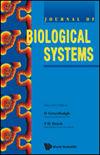GLOBAL DYNAMICS AND OPTIMAL CONTROL FOR A VECTOR-BORNE EPIDEMIC MODEL WITH MULTI-CLASS-AGE STRUCTURE AND HORIZONTAL TRANSMISSION
IF 1.5
4区 数学
Q3 BIOLOGY
引用次数: 0
Abstract
An age-structured vector-borne disease model with horizontal transmission is proposed and studied in this paper, where the incubation ages of both host and vector and the immunity age of host are also introduced to consider the effects of multi-class-age structure. The reproductive number [Formula: see text] is derived as a threshold value to determine the existence and stability of the disease-free and endemic steady states. Furthermore, by constructing suitable Lyapunov functionals, the global threshold dynamics of this model is established by [Formula: see text], that is, the disease-free equilibrium is globally asymptotically stable when [Formula: see text], while if [Formula: see text] the endemic equilibrium is globally asymptotically stable. In addition, considering the limited budget of the centers for disease control and prevention (CDC) in the process of disease control, we present an optimal control problem with a fixed total expenditure, and discuss the existence of the most control strategy for this disease. Finally, some numerical simulations are performed to support the theoretical results.一类具有多类结构和水平传播的媒介传染病模型的全局动力学和最优控制
本文提出并研究了一个具有水平传播的年龄结构的媒介传播疾病模型,其中引入了宿主和媒介的潜伏期以及宿主的免疫年龄,以考虑多类年龄结构的影响。生殖数[公式:见正文]是一个阈值,用于确定无病和地方病稳定状态的存在和稳定性。此外,通过构造合适的李雅普诺夫泛函,该模型的全局阈值动力学由[公式:见正文]建立,即当[公式:参见正文]时,无病平衡是全局渐近稳定的,而如果[公式:看正文],地方病平衡是全球渐近稳定的。此外,考虑到疾病预防控制中心(CDC)在疾病控制过程中的有限预算,我们提出了一个固定总支出的最优控制问题,并讨论了该疾病存在的最控制策略。最后,进行了一些数值模拟以支持理论结果。
本文章由计算机程序翻译,如有差异,请以英文原文为准。
求助全文
约1分钟内获得全文
求助全文
来源期刊
CiteScore
2.80
自引率
12.50%
发文量
31
审稿时长
1 months
期刊介绍:
The Journal of Biological Systems is published quarterly. The goal of the Journal is to promote interdisciplinary approaches in Biology and in Medicine, and the study of biological situations with a variety of tools, including mathematical and general systems methods. The Journal solicits original research papers and survey articles in areas that include (but are not limited to):
Complex systems studies; isomorphies; nonlinear dynamics; entropy; mathematical tools and systems theories with applications in Biology and Medicine.
Interdisciplinary approaches in Biology and Medicine; transfer of methods from one discipline to another; integration of biological levels, from atomic to molecular, macromolecular, cellular, and organic levels; animal biology; plant biology.
Environmental studies; relationships between individuals, populations, communities and ecosystems; bioeconomics, management of renewable resources; hierarchy theory; integration of spatial and time scales.
Evolutionary biology; co-evolutions; genetics and evolution; branching processes and phyllotaxis.
Medical systems; physiology; cardiac modeling; computer models in Medicine; cancer research; epidemiology.
Numerical simulations and computations; numerical study and analysis of biological data.
Epistemology; history of science.
The journal will also publish book reviews.

 求助内容:
求助内容: 应助结果提醒方式:
应助结果提醒方式:


